So it’s pretty obvious that all my woodworking stuff is done with hand tools, right?
It’s not because of an ideology, it’s because 8’x6′ sheds don’t give you a lot of room for power tools or machinery. I do find the power tools really obnoxiously loud, but that’s a secondary point and it’s mainly because the cheap modern power tools tend to use lightweight construction and universal motors in order to hit a price point and so make a lot of high-pitched noise — older stuff with induction motors and a lot of cast iron are a lot less screechy (you definitely do need hearing protection anyway, but for the neighbours it’s a significant qualitative difference).
And for some things – joinery, shaping, finishing and so on – it’s more of a challenge to use hand tools and so more satisfying to do. But there are some tasks that just don’t have that challenge. I should say for the non-woodworkers here that the whole “what really counts as hand tool woodworking?” question is a long-running one. My answer is that if it’s a task that in the 18th century was handed off to apprentices to go do unsupervised, well, handing it off to a machine isn’t really showing a lack of ability, just a lack of time.
All of which prevarication is a run-up to saying I’ve bought a new power tool for the first time in a long while.
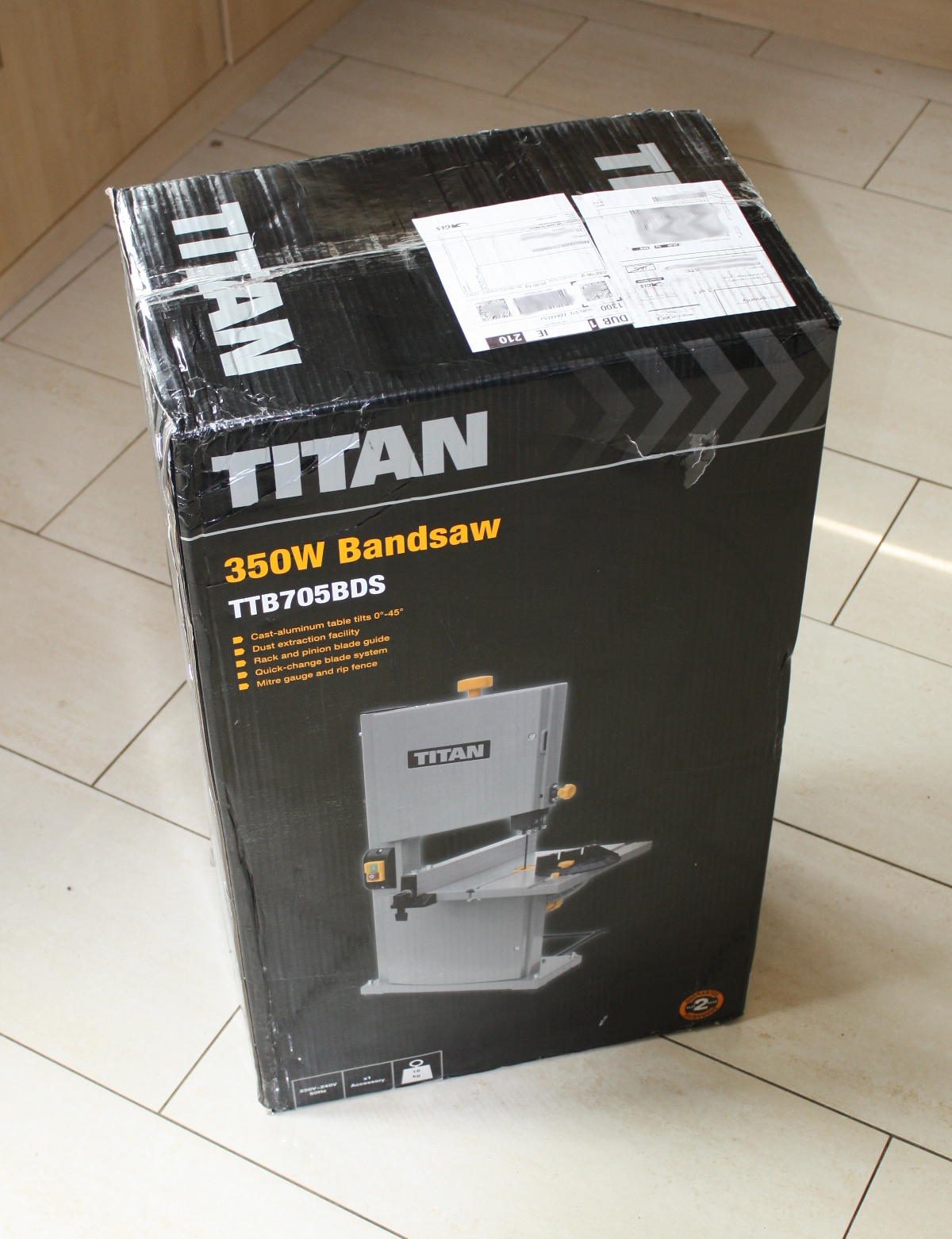
Well, what else is a husband supposed to do on a day off while the wife is off visiting her sister? Exactly, bandsaws.
This is one of those rebadged clones of the Record Power BS9, there are a few dozen manufacturers selling them – Craftsman have the BAS230, Ryobi have the BS903, Scheppach the HBS20, Einhell the TC-SB200, Charnwood the W711, Titan does the TTB705BDS and Aldi sell a WorkZone variant as well. The Aldi one was the one that caught my eye initially as it seemed it would fit in the shed based on Peter Millard’s video about using it in the shop; and he also pointed out that for the money and the size (and within its design parameter), it was a nice little design that was worth having around:
So I was waiting for the Aldi version to show up again, but that didn’t look like it was happening this year so I trotted off to Screwfix to order the Titan (ordering or buying off the shelf in any Dublin shop would have doubled the pricetag).
The nice delivery man showed up this morning with the box so off I trotted to the shed with and unpacked it.
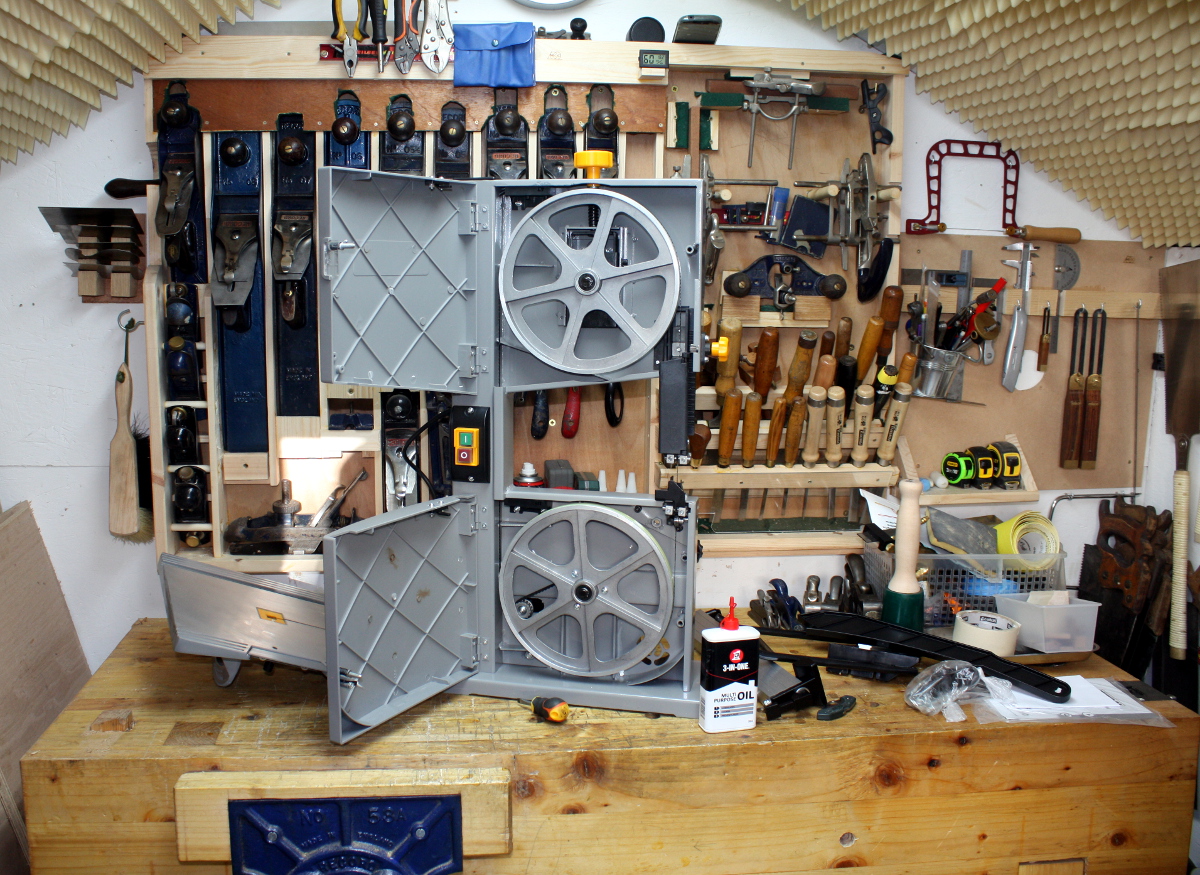
Then, a quick check of the alignment of the blade — see the quick setup guide by Alex Snodgrass here:
I was pleasantly surprised by the guides in the Titan; rather than the thrust bearing’s face being the point of contact with the blade, it’s the bearing’s edge that makes contact. That’s a better solution but slightly more expensive to make. One of the myriad small differences between the variants of this design I suppose, along with nice touches like the little window to check blade tracking without opening the case:
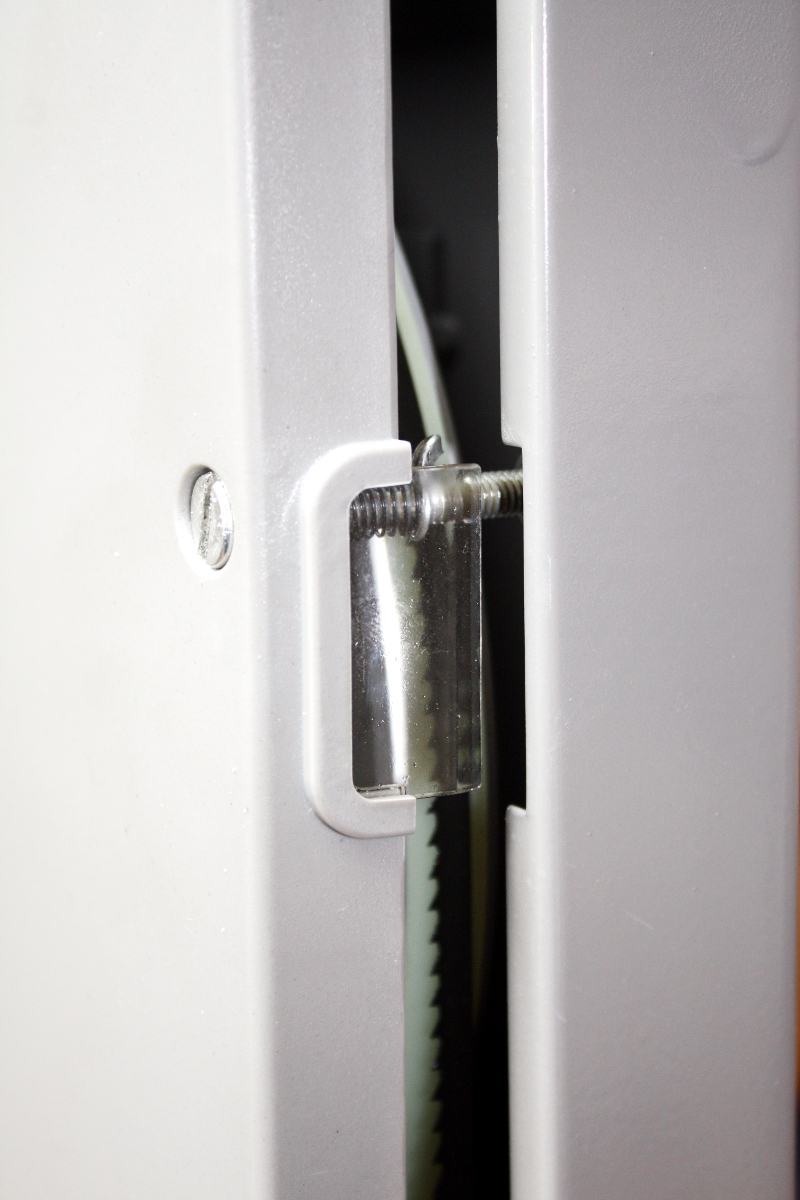
There are less fun bits – the screw latches of the case aren’t captive nuts opened by a single half-twist, but full-on ten-turns-to-latch bolts. And the bottom door isn’t fully closed at the top when the bolt is fully seated. But the blade seems to run quite true and the supplied blade is quite clean-cutting. I do have three others coming from Tuffsaws – a fine quarter-inch blade for curves, a three-eights inch blade for general work and a half-inch blade for heavier work, though “heavier work” here is quite relative – this is never going to resaw anything wider than 70mm.
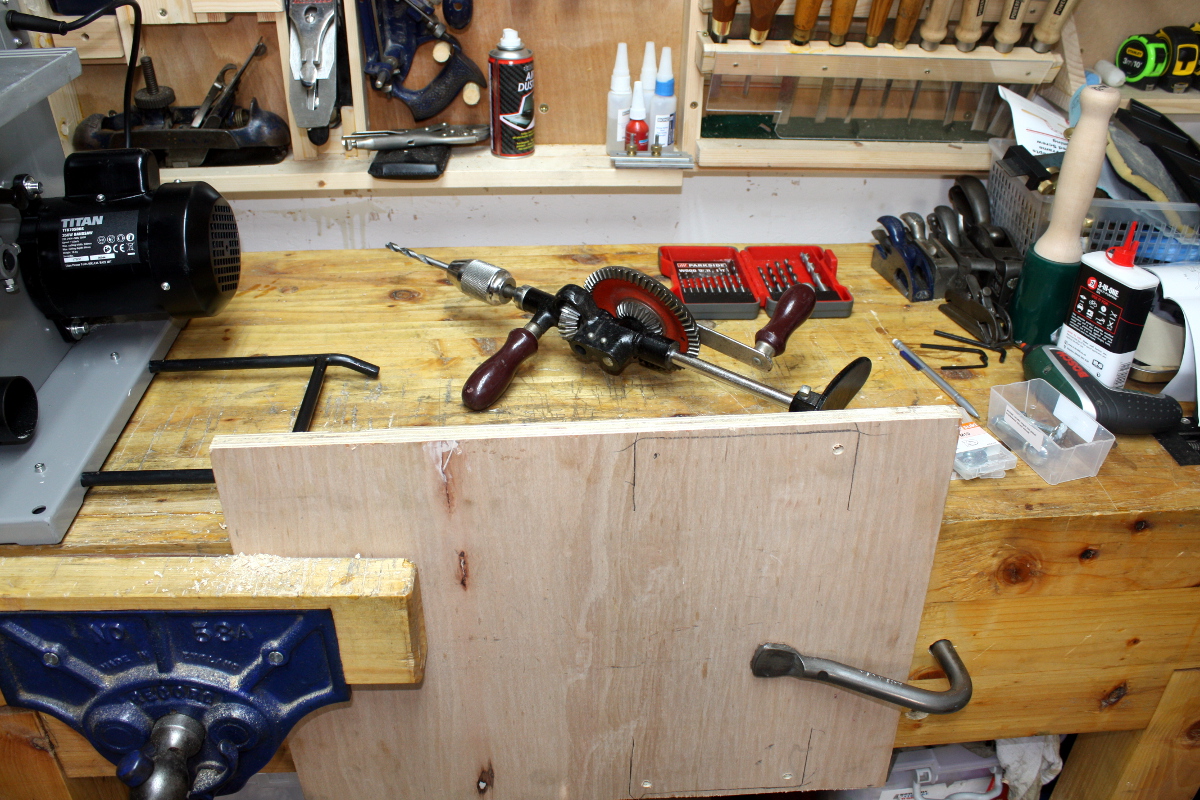
I didn’t abandon the hand tools when building the base at least 😀 The base gets holdfast-ed down to the bench for work.
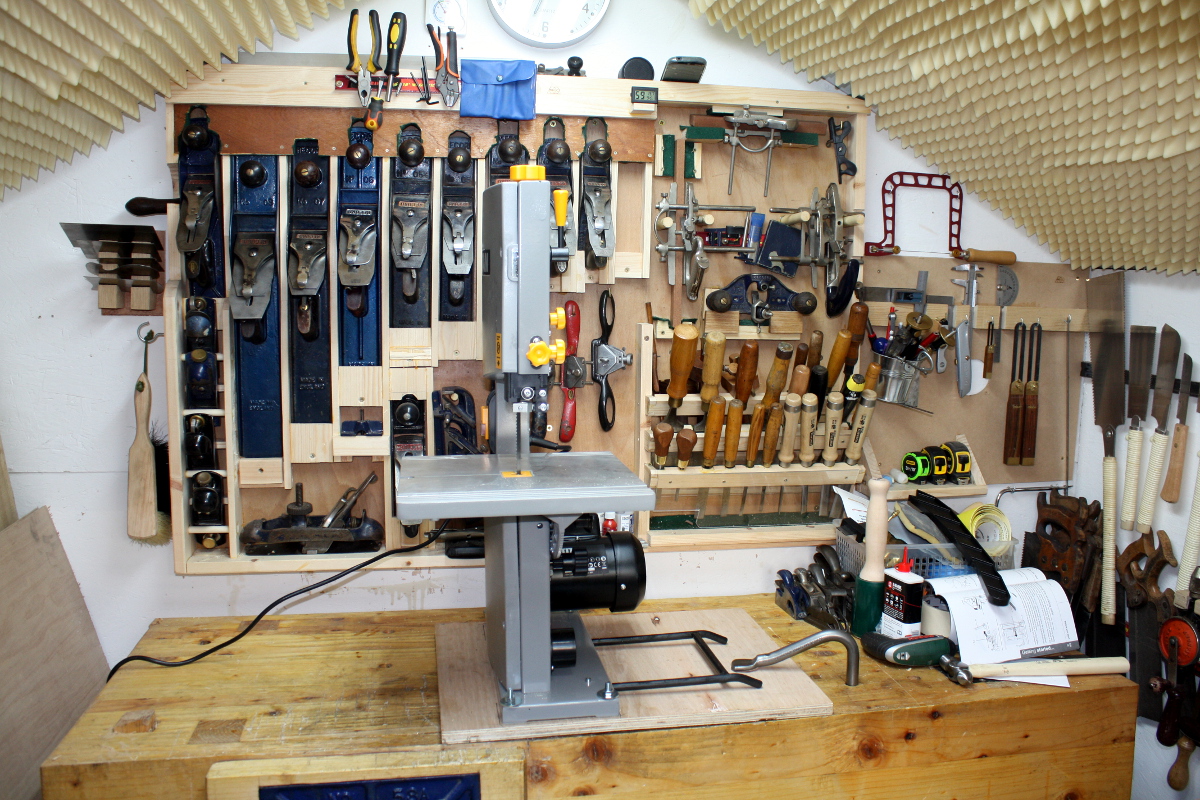
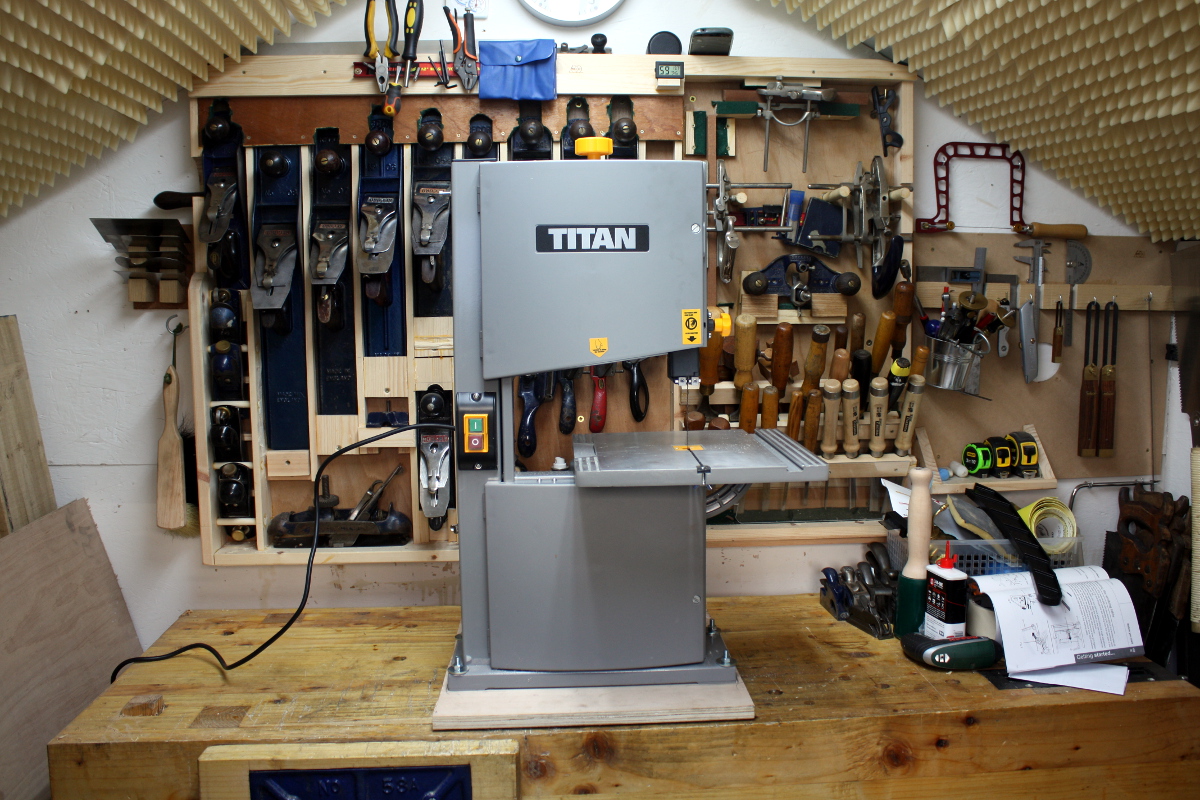
Of course, it can’t live on the bench, the only place for it is down on the floor (with the blade guide dropped right down to protect the blade of course). Just … right… down… there.
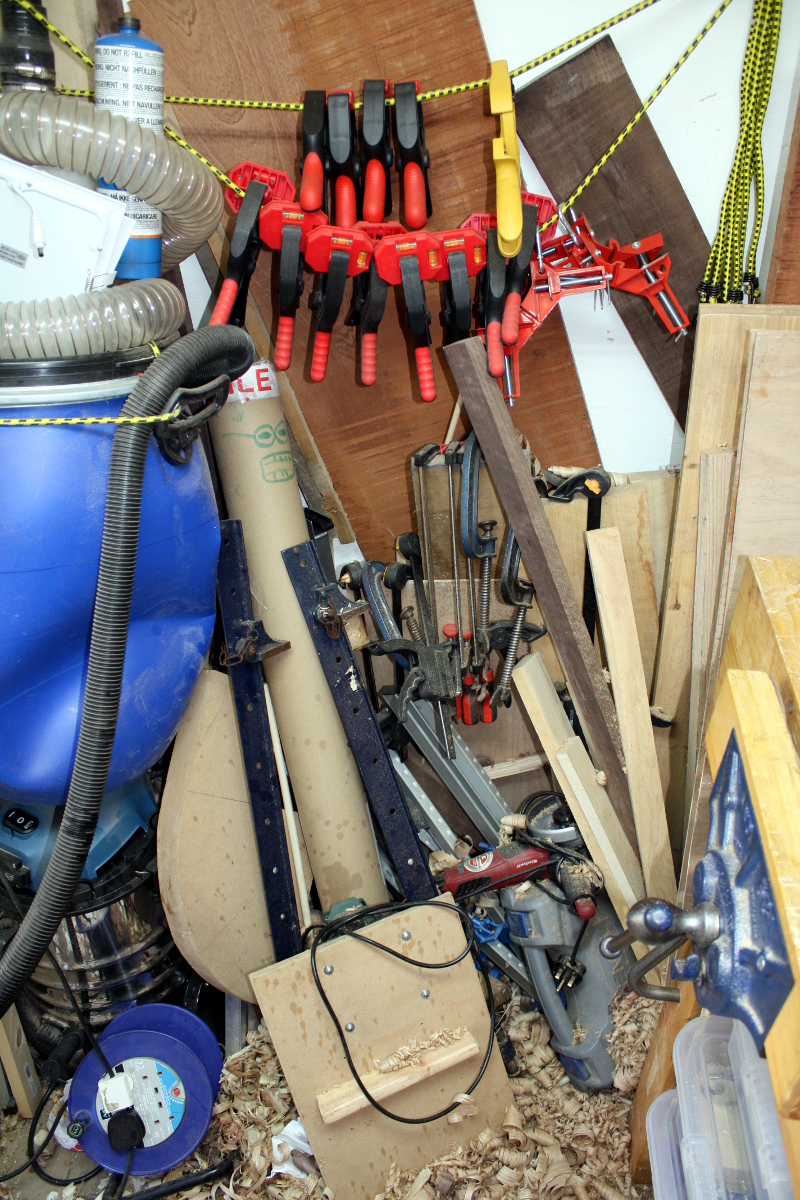
Ah. Right. I have been putting off the tidy up and clamp storage job for a while, haven’t I? Oh well.
One afternoon later…
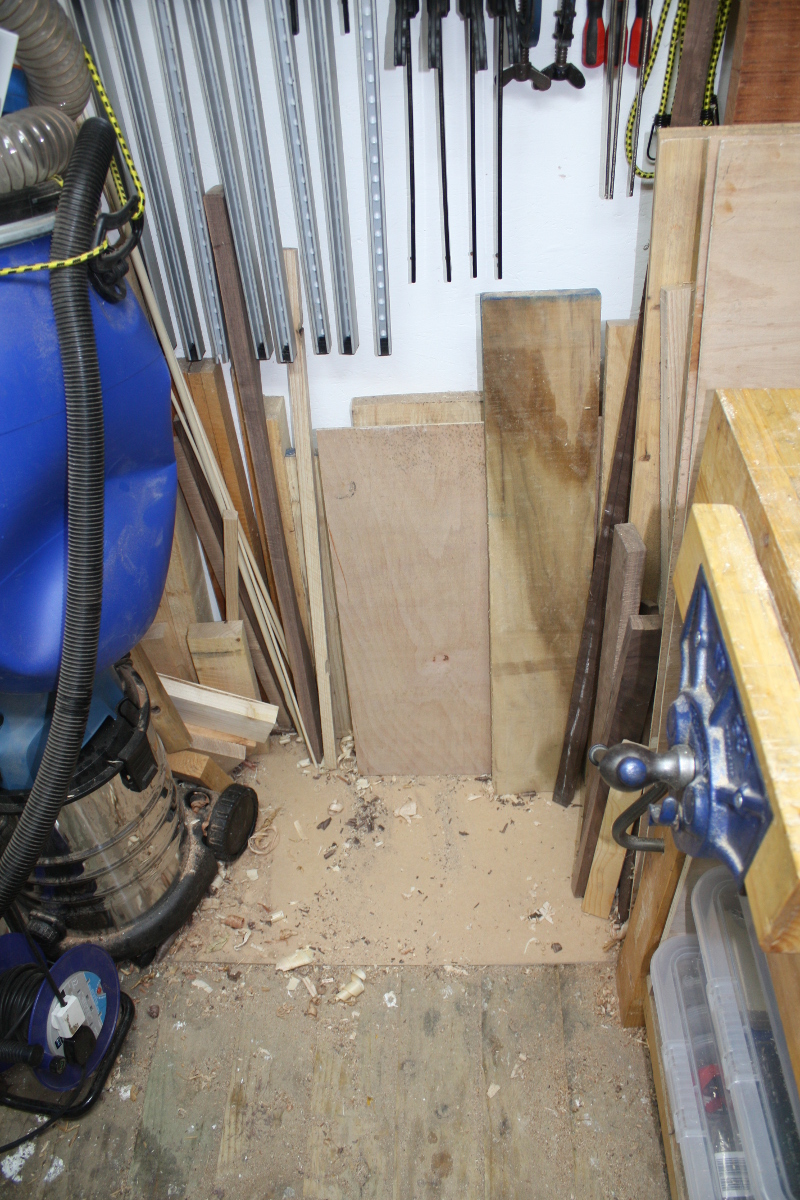
Clear floor space and as to the clamps…
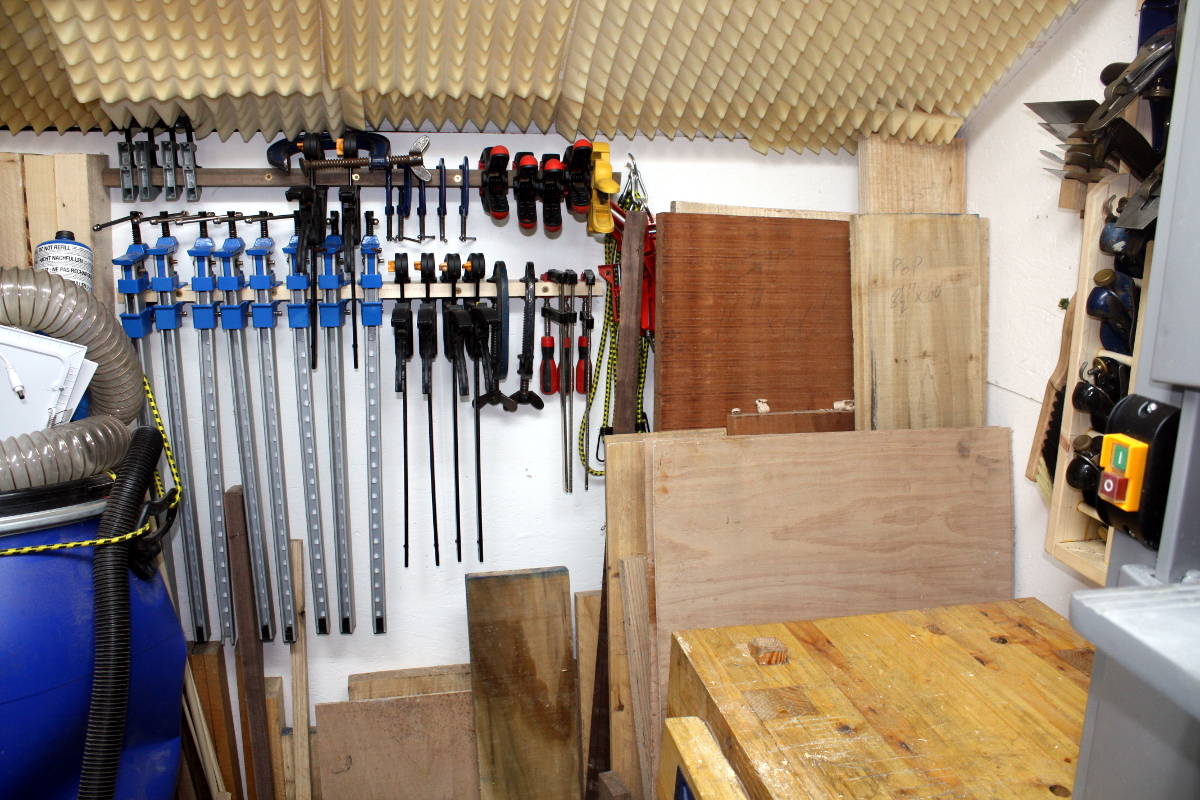
Much tidier. So from now on, the bandsaw lives here:
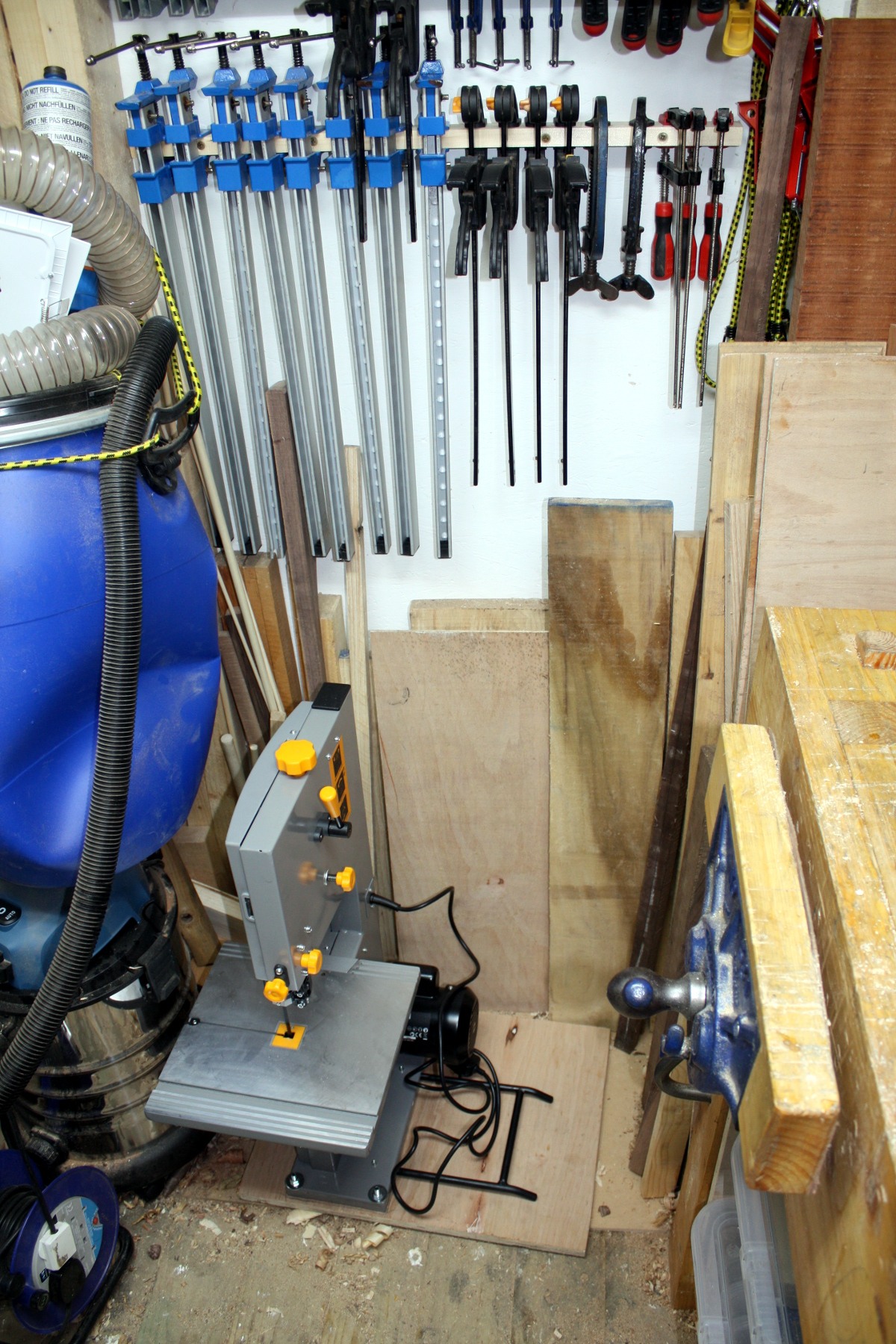
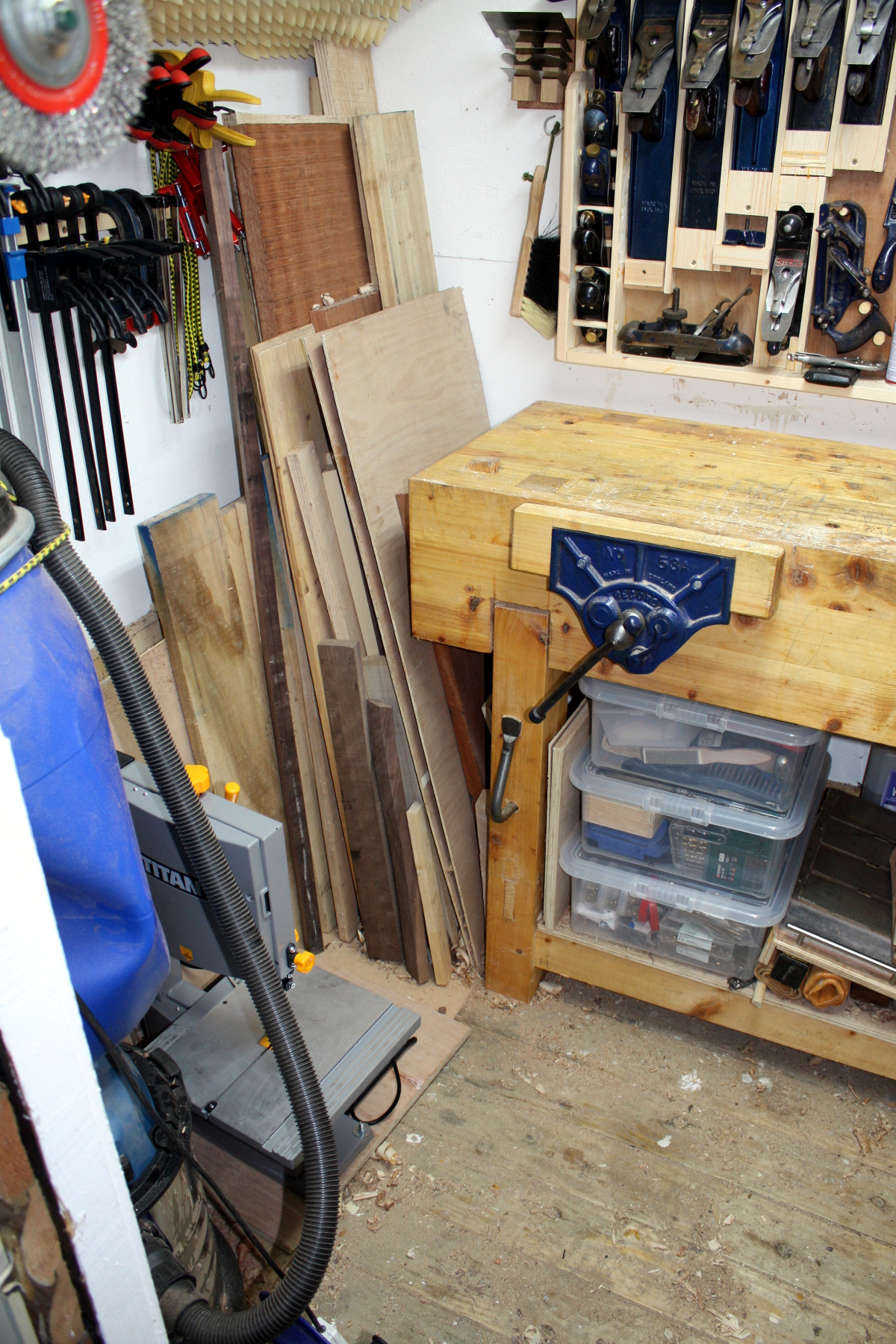
So this should help with some rough work, and I wouldn’t mind trying to make a bandsaw box or two. I have a bunch of tiny scraps of walnut left over from the cot that I have been trying to find a use for.
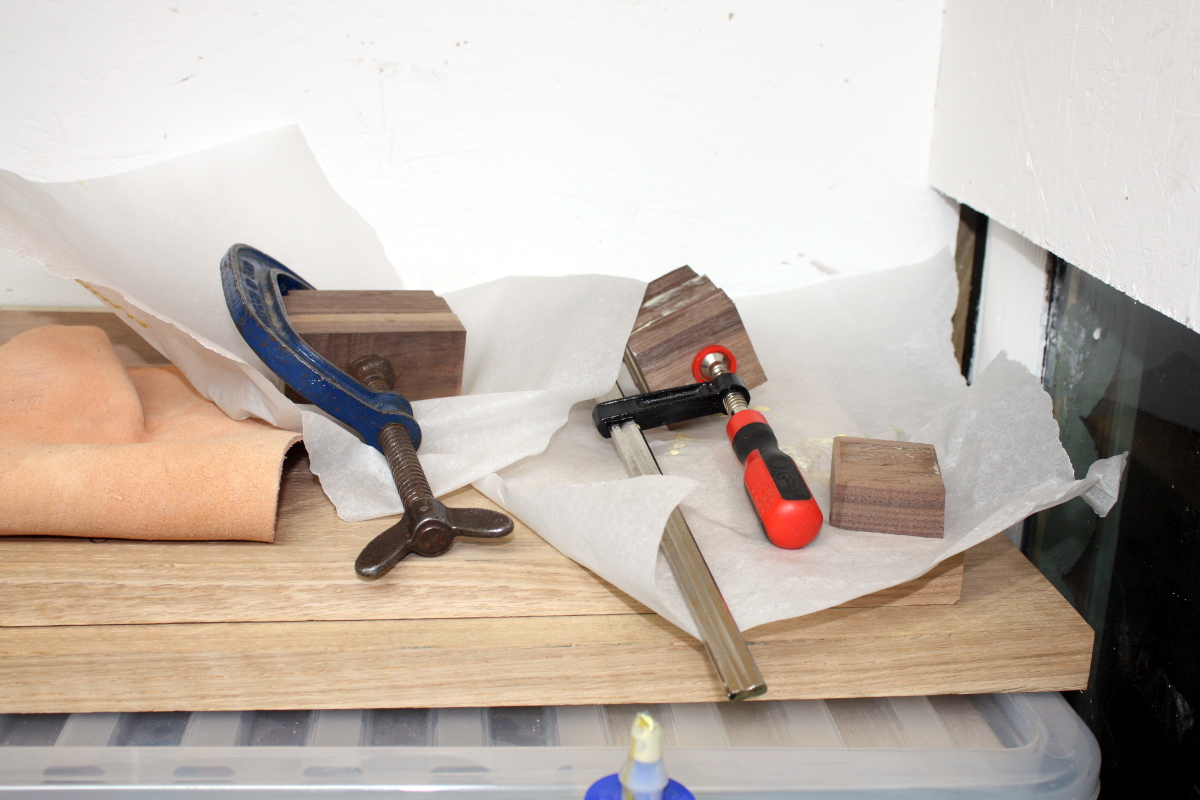
The glue should be dry by tomorrow, and then I can give it a go…
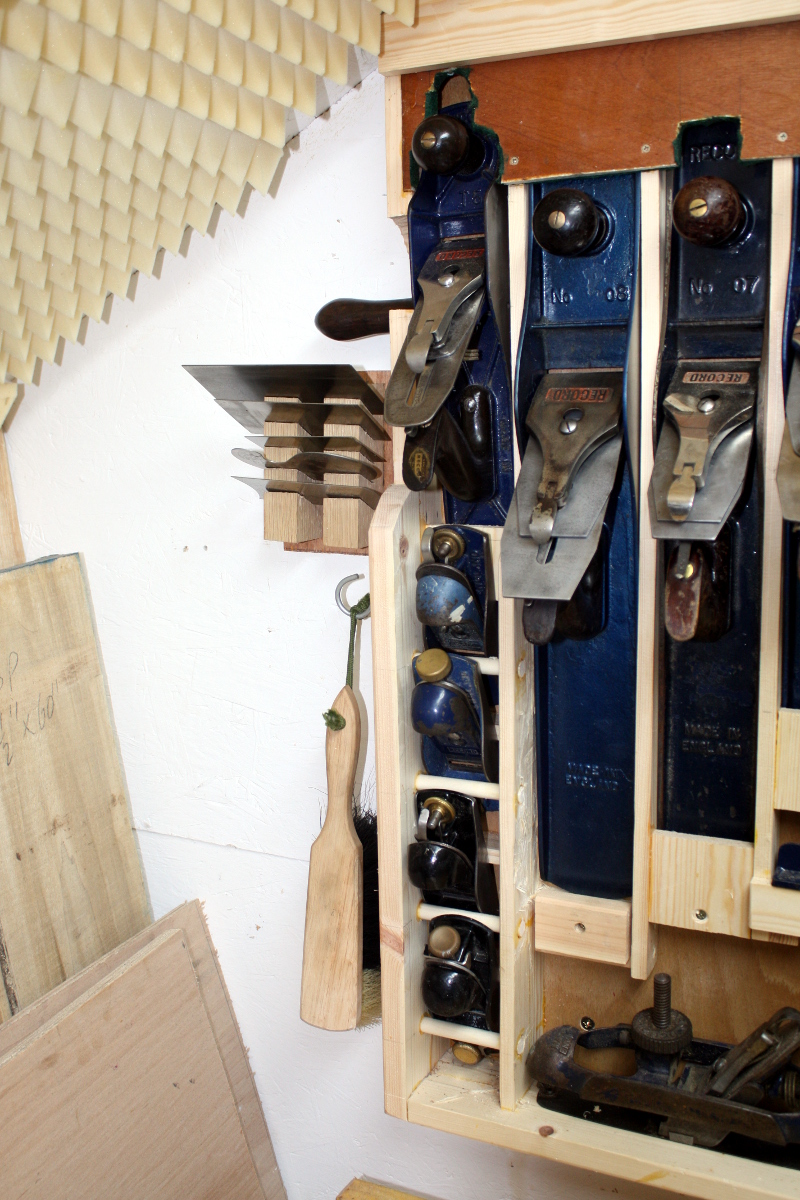
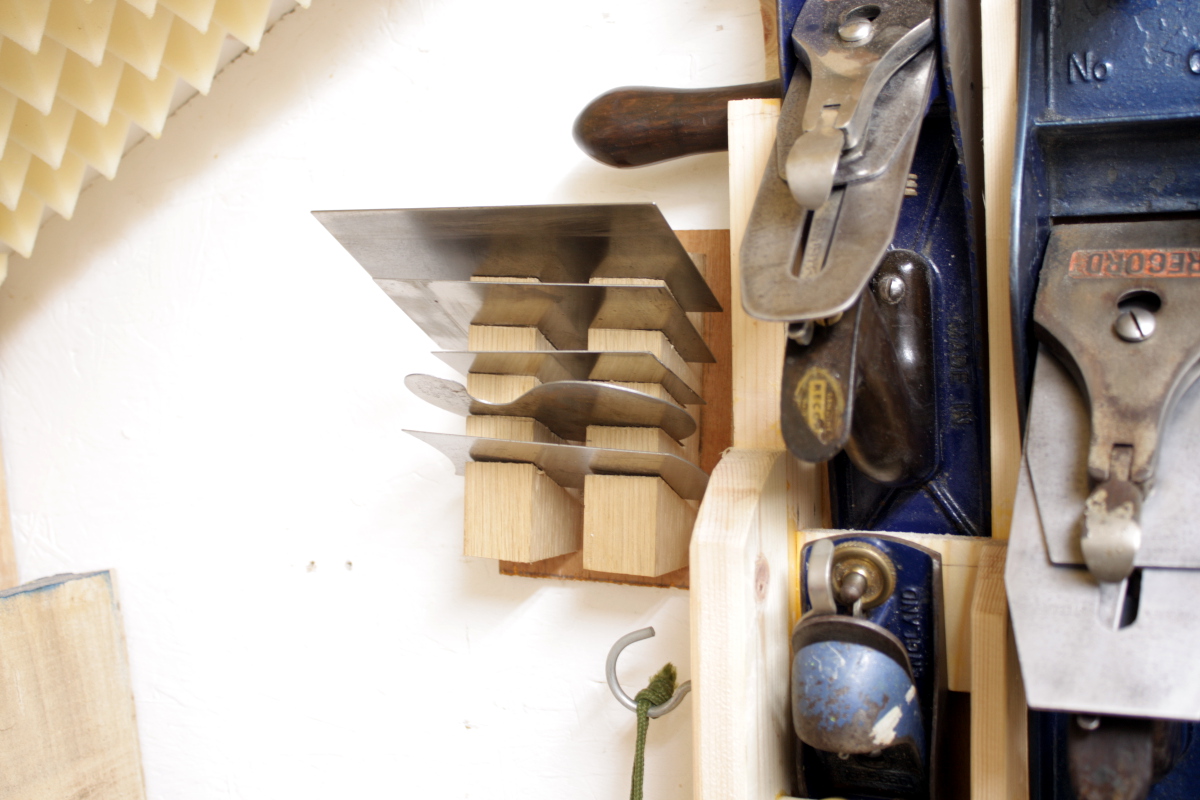
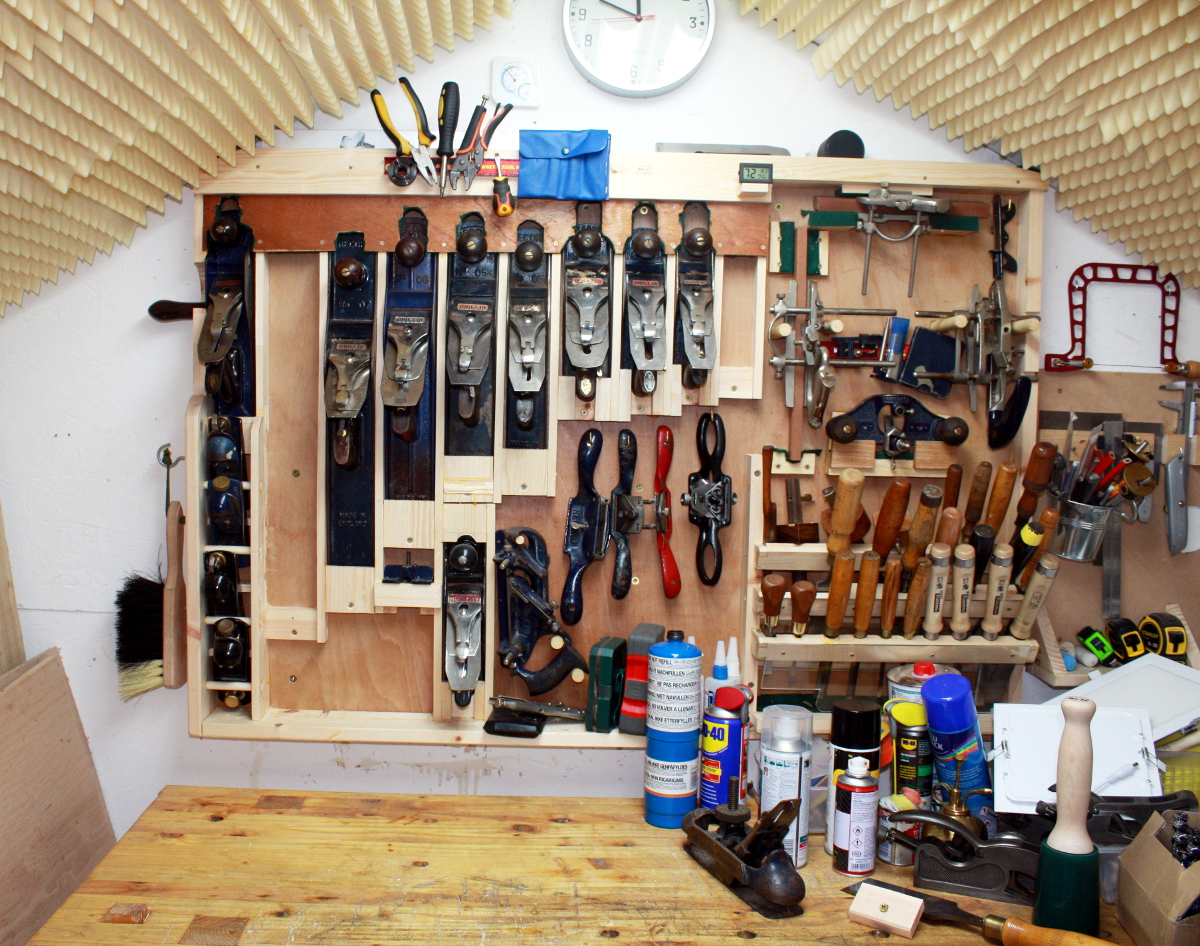
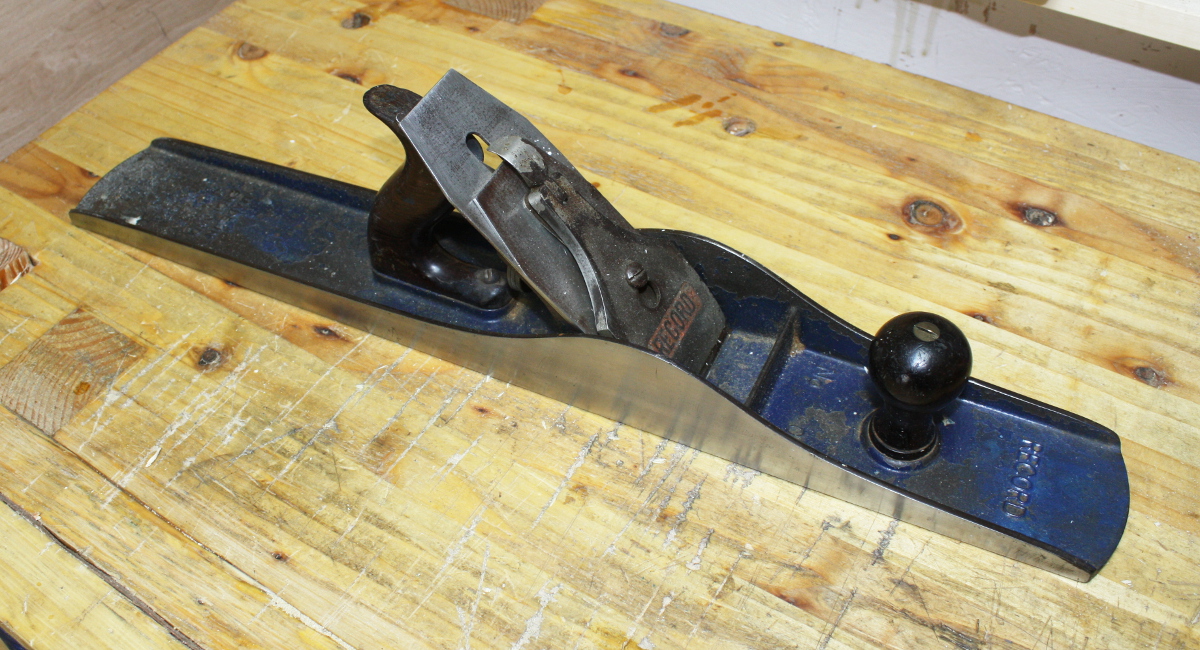
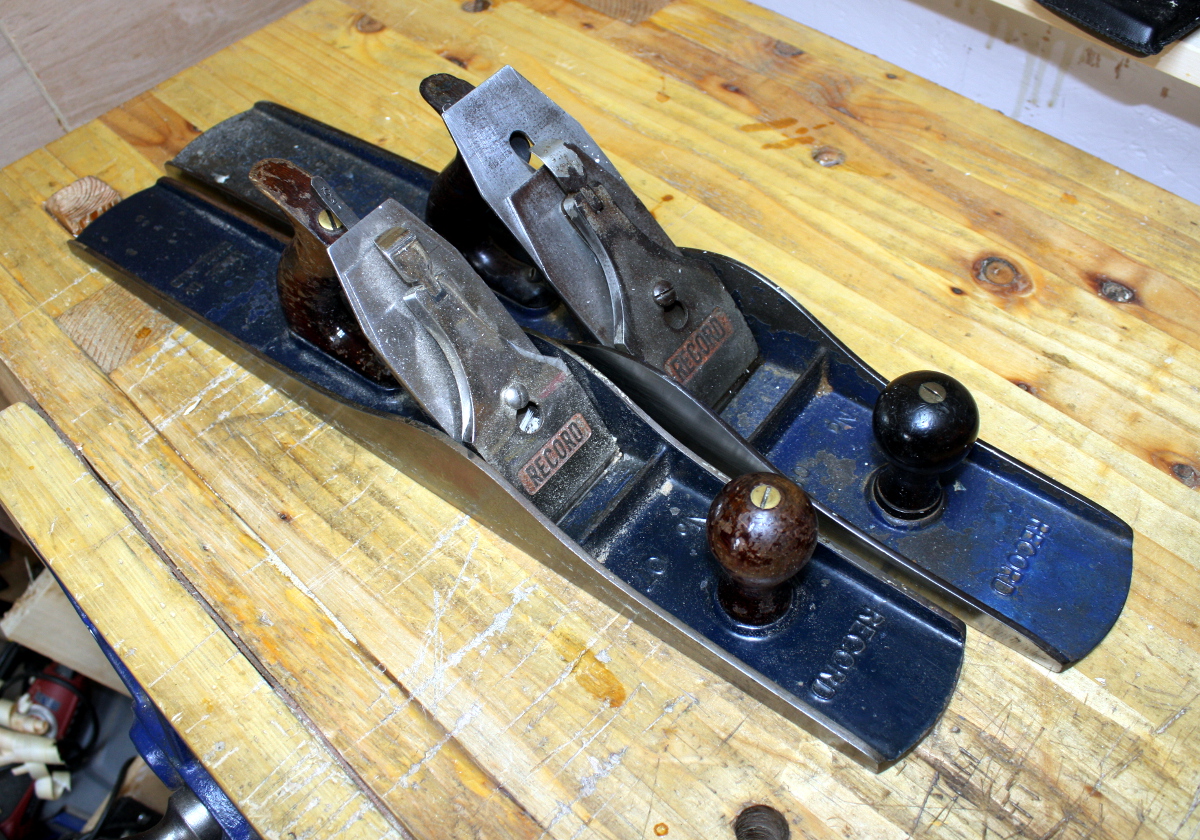
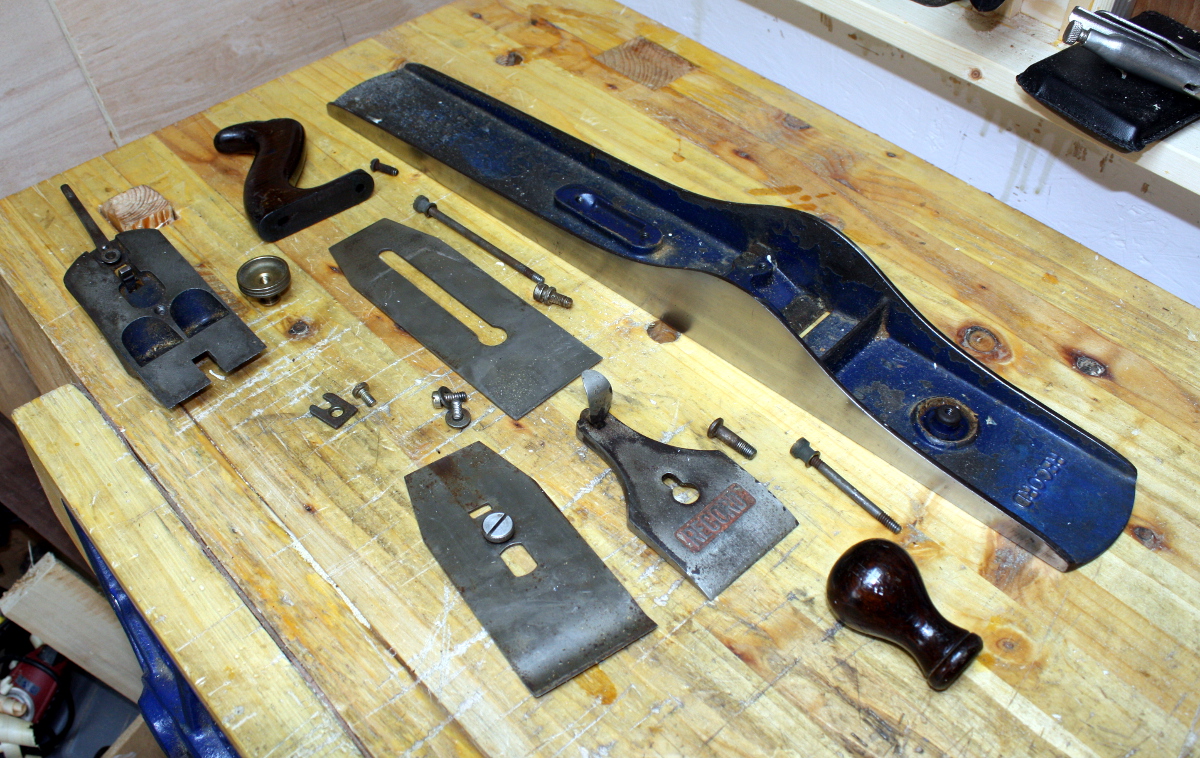
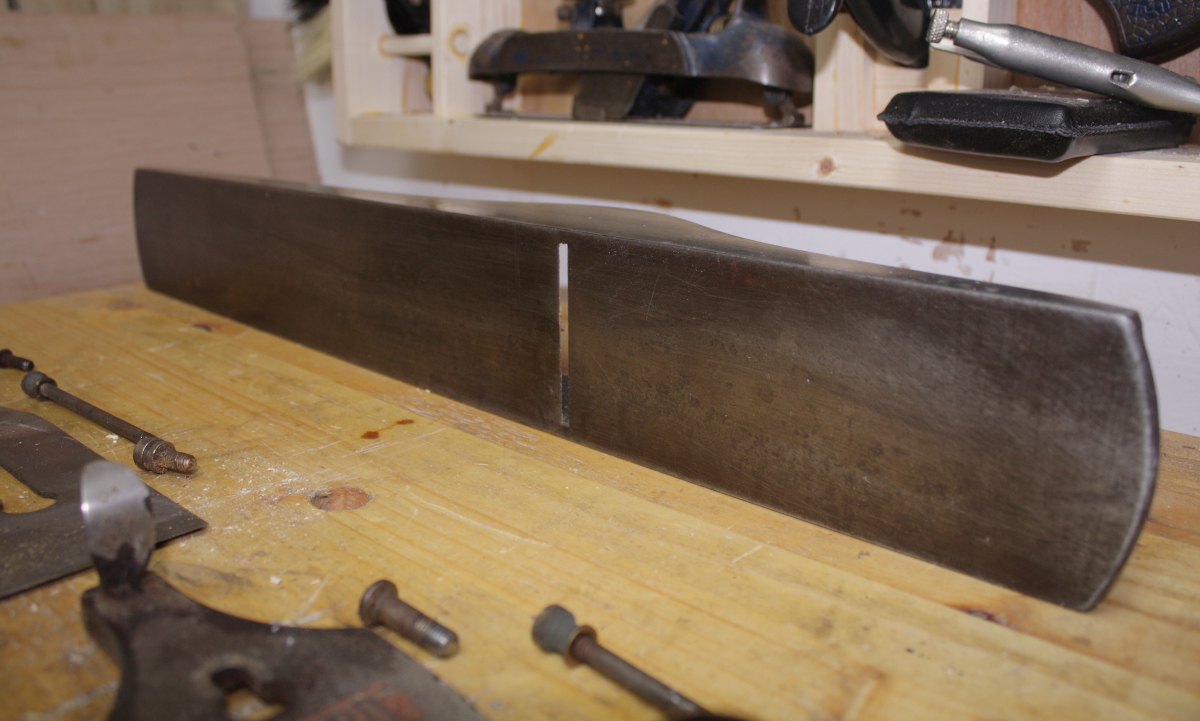
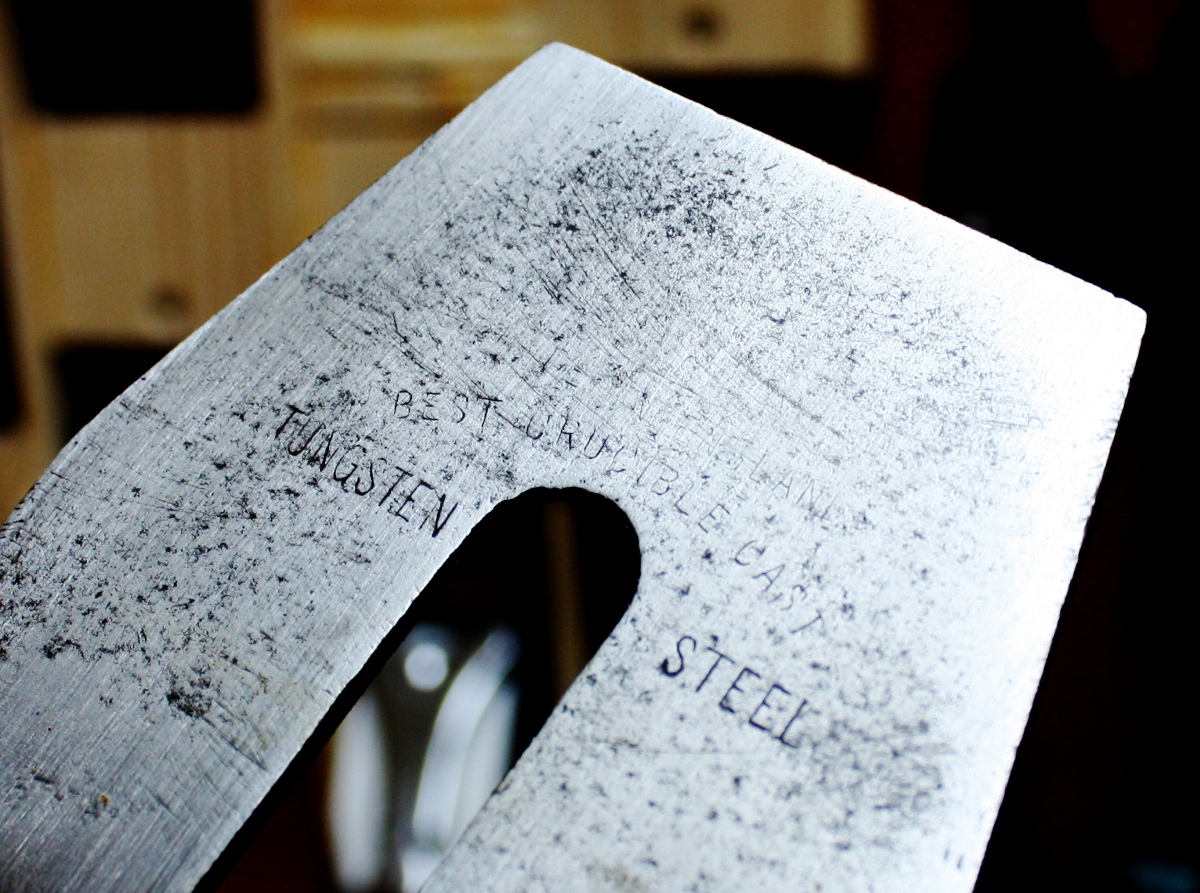
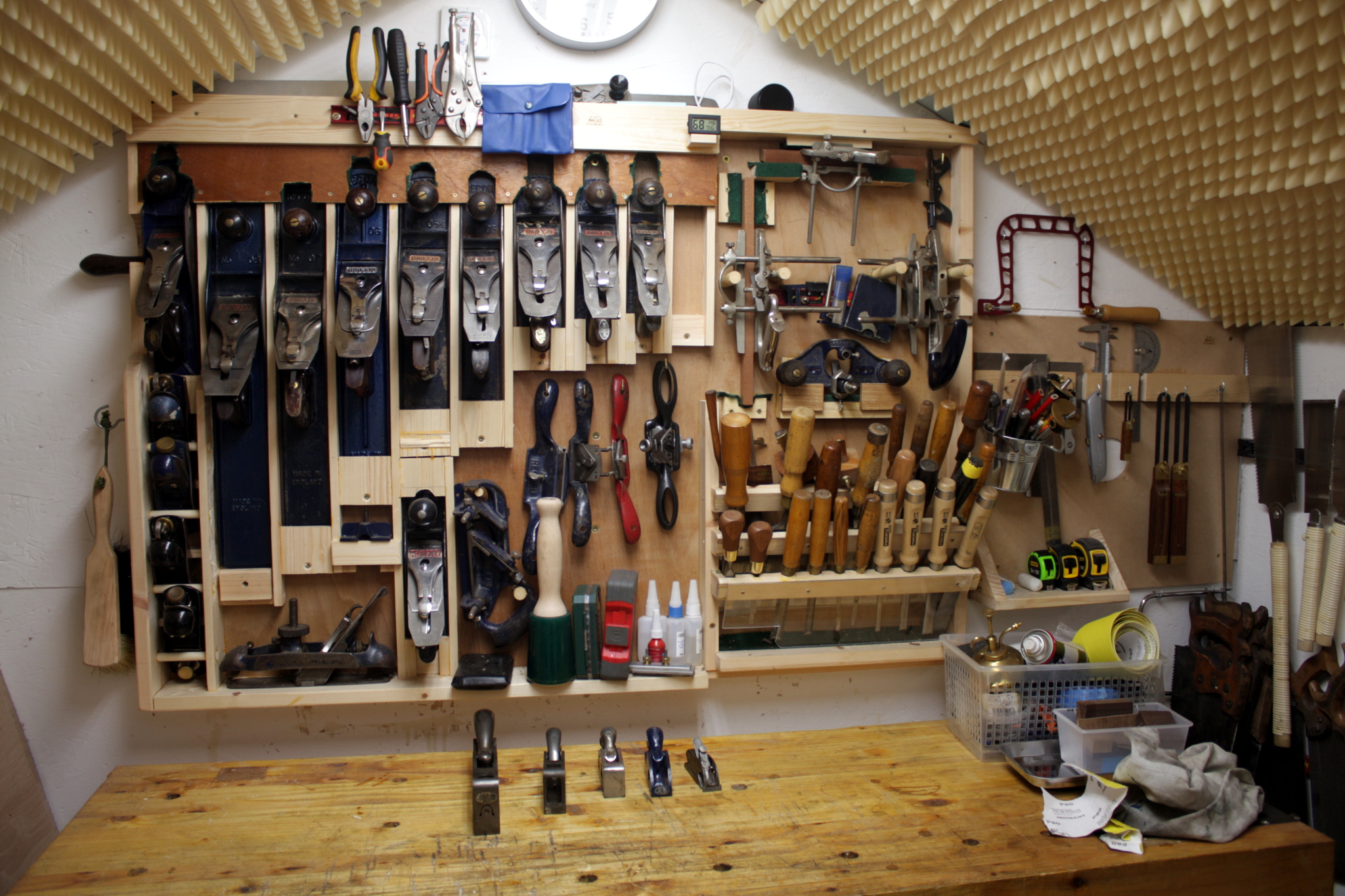
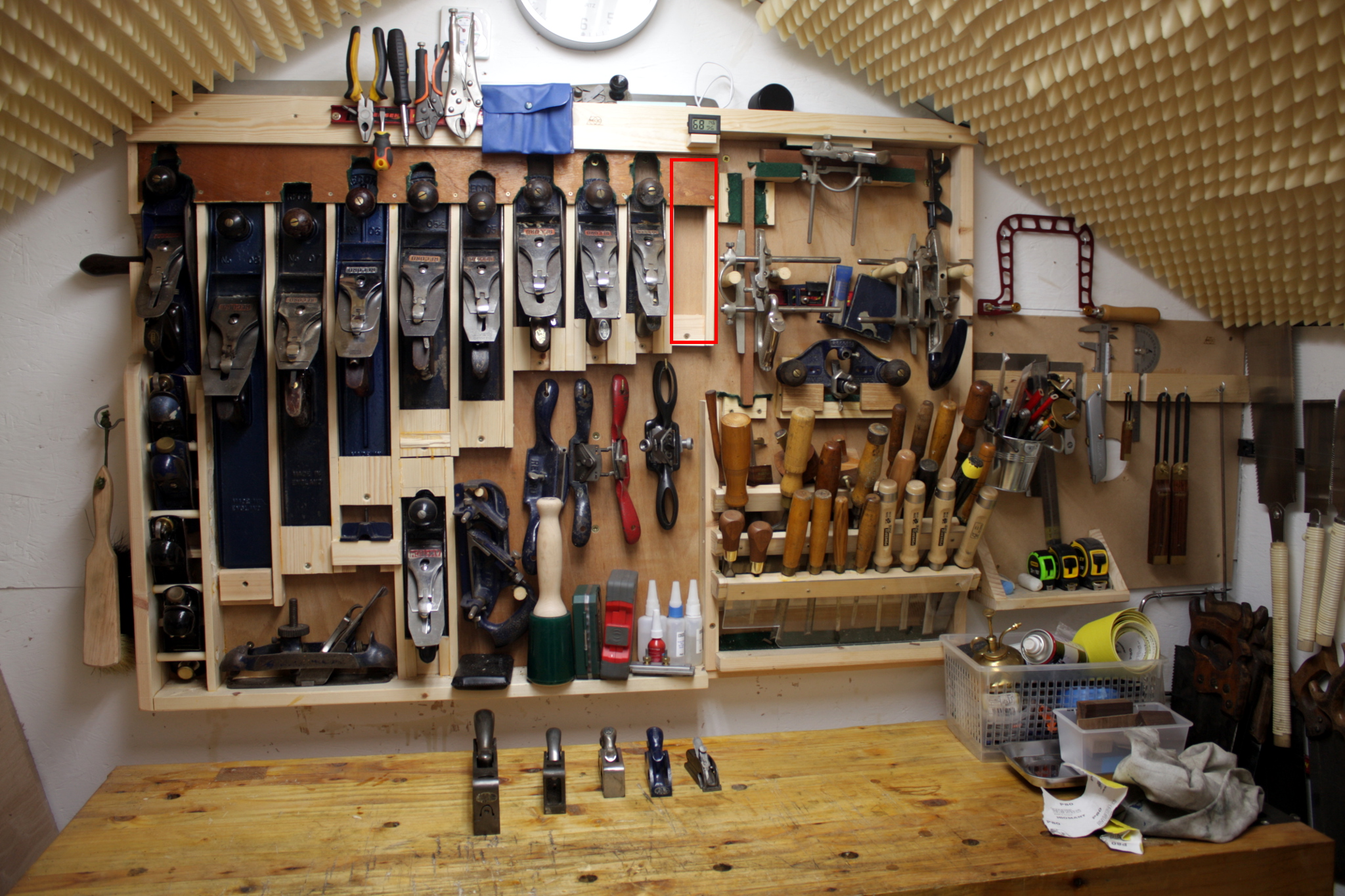
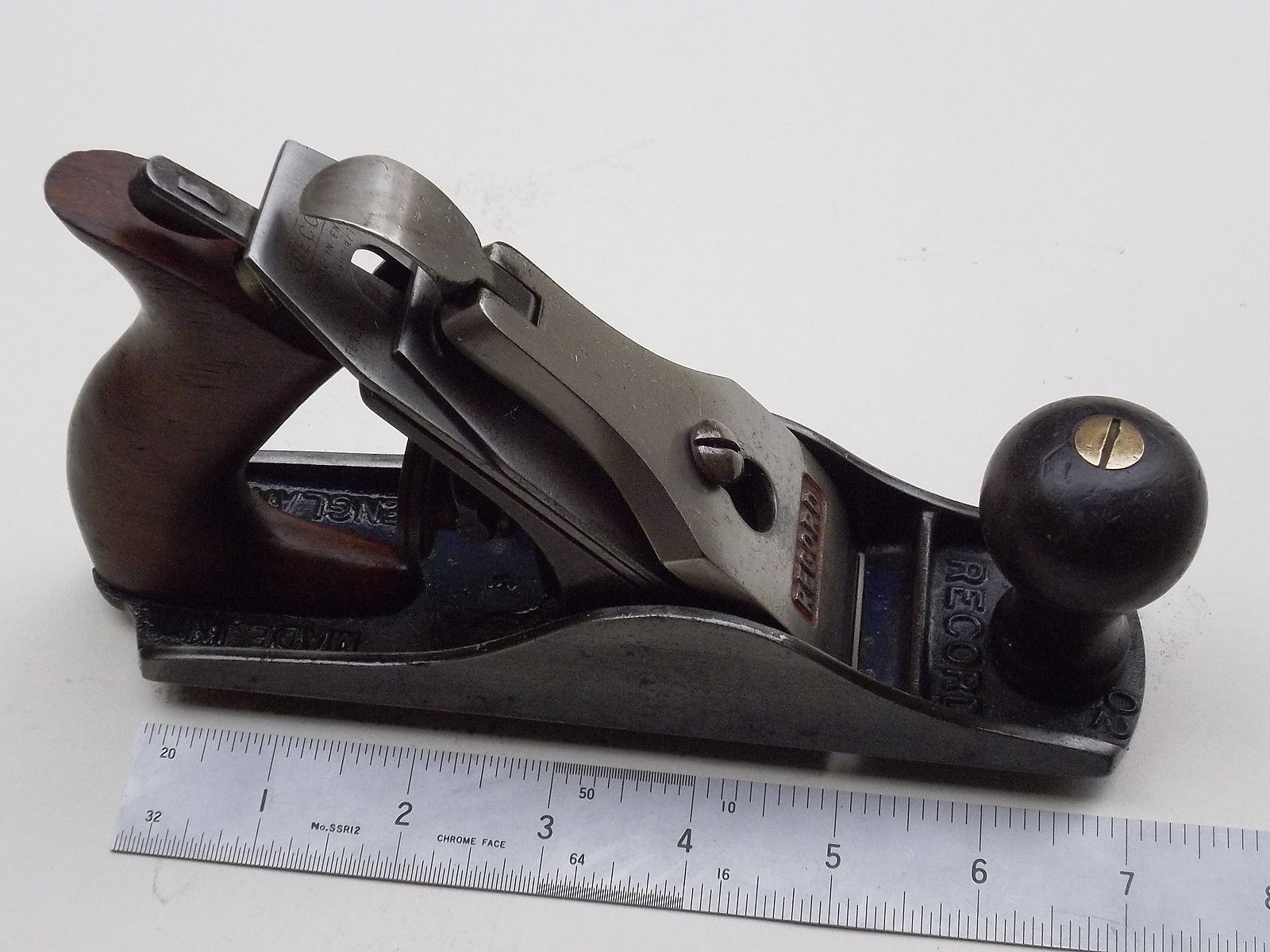 They never made a #1, Stanley did that and these days those go for five-figure sums to collectors. But Record’s #2 still goes for stupid money, when you can find them at all. They didn’t make as many as they did of the workhorse #4s and #5s or even of the fancy #7s and #8s and when the second world war happened they went out of production in a hurry – and when there’s a war on, lots of metal gets melted down to make gun barrels and the #2 was a small smoothing plane for fine work; nobody really had a use for them that a #3 couldn’t fulfill so off to the crucible a lot of them went (same happened to the Stanley #1s). Oh well. They’re not as crazy as the Stanley #1s, but the last time I saw one on ebay, it sold at the asking price of almost €400 within 12 hours of being posted.
They never made a #1, Stanley did that and these days those go for five-figure sums to collectors. But Record’s #2 still goes for stupid money, when you can find them at all. They didn’t make as many as they did of the workhorse #4s and #5s or even of the fancy #7s and #8s and when the second world war happened they went out of production in a hurry – and when there’s a war on, lots of metal gets melted down to make gun barrels and the #2 was a small smoothing plane for fine work; nobody really had a use for them that a #3 couldn’t fulfill so off to the crucible a lot of them went (same happened to the Stanley #1s). Oh well. They’re not as crazy as the Stanley #1s, but the last time I saw one on ebay, it sold at the asking price of almost €400 within 12 hours of being posted.
